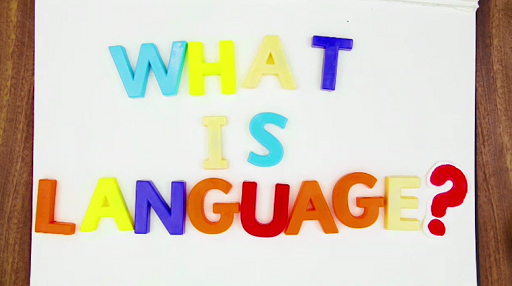1 What is language?
You’ll start by looking at a basic, but rather complicated question: What is language?
The answer may seem straight-forward. Language is a means of communication. It’s what people use to exchange ideas with each other. It’s a way of encoding information in sound, writing or gestures which can then be passed from one person to another. But when we start to think about it in a little more detail, it’s not quite as simple as it may at first seem.
Activity 1
Part 1
Have a think about all the times and ways you’ve used language so far today.
- What have you used it to achieve?
- Could you have done these same things without language?
- What sorts of language have you used? Spoken, written, gestures or other forms of physical communication?
- Have you used predominantly English, or other languages as well?
Jot down any thoughts you have about this in the text box below. Once you’ve done so, save your answer and then read the comment for this part of the activity.
Comment
First off, you’re using language to read this course. This is written language, but in a moment, when you watch the video, it’ll include spoken language as well. Simply by going through the act of turning on the computer and navigating through to this page, you’ll have probably encountered – and had to produce – a variety of other language. So even for a small everyday task such as sitting down to do an online course, you’re using language for education purposes, for navigation purposes, perhaps for protecting your online identity through the use of passwords, and so on. And none of these things – at least in the way they are done in modern, everyday life – would have been possible without the use of language.
Part 2
Now watch the animation below, which gives a concise overview of what language is and what we use if for. While watching, keep an eye out particularly for the different functions or purposes we use language for.
Again, type your answer or thoughts into the text box and save your answer to read the comment for this activity.

Transcript: Video 1 What is language?
Comment
As the video notes, language isn’t simply a tool we use for passing information from one person to another. This is certainly one of its main functions. However, language is also a central factor in the way we express our identity – and how others interpret our identity. It’s one of the main ways we have of establishing and maintaining relationships, as well as communicating our emotions and feelings.
Another important issue touched on in the video is that a crucial part of our experience of language comes from the relationship between language and technology. This has been the case for several millennia: as the animation notes, writing itself can be seen as a technology. In the era of digital technology though, this relationship is arguably more influential on the ways in which we use language than ever.
Over the next few sections, you’ll explore many of the ideas introduced in the animation in more detail. And you’ll start with a look at where the language that we’re communicating in now first came from.
